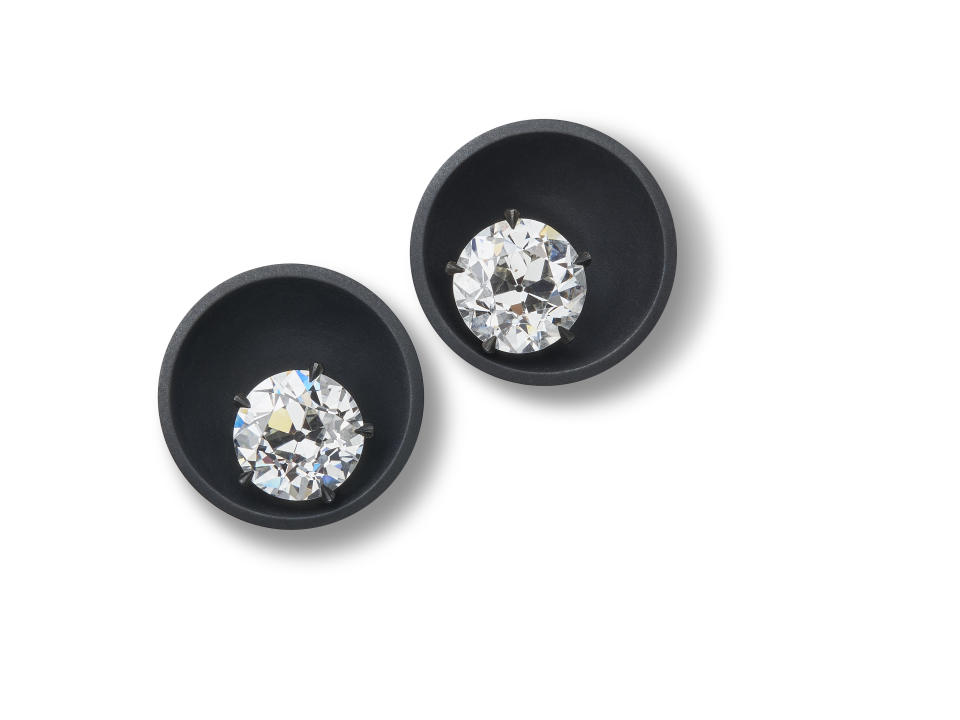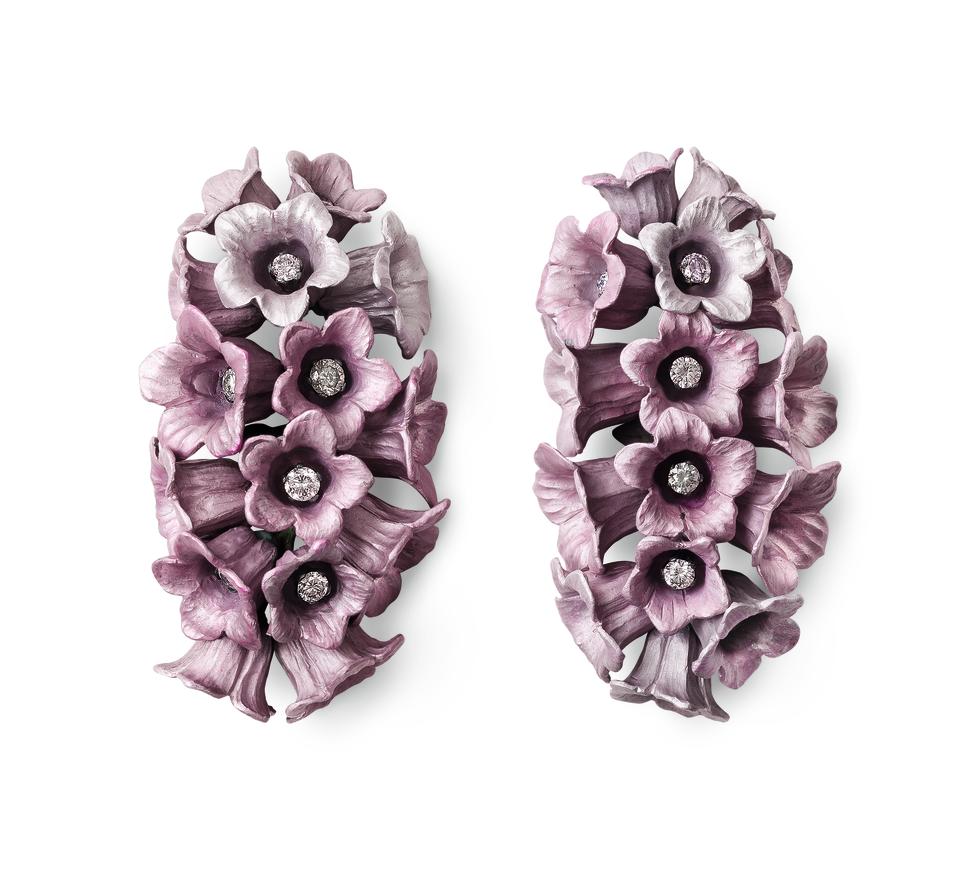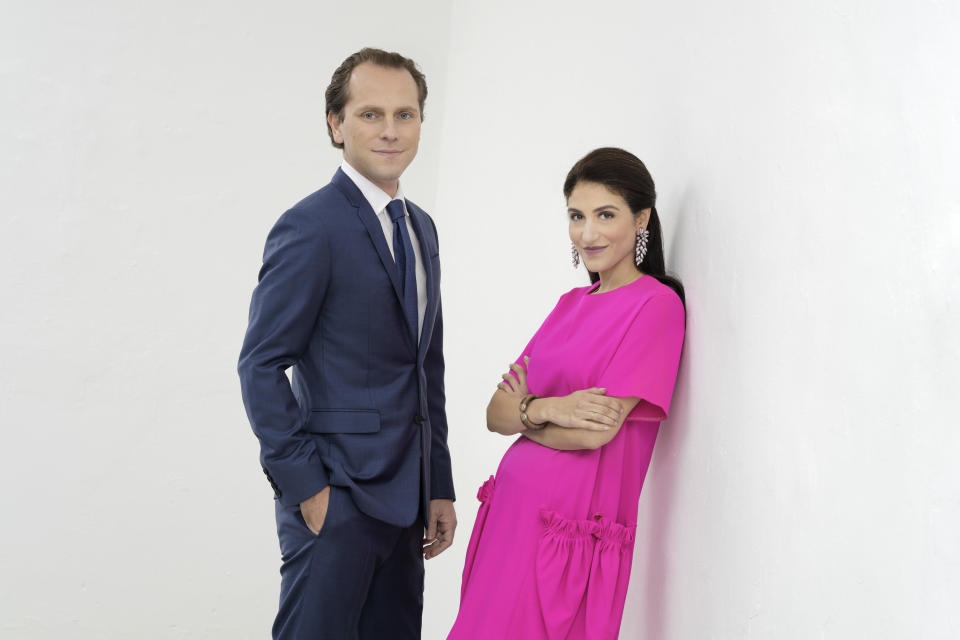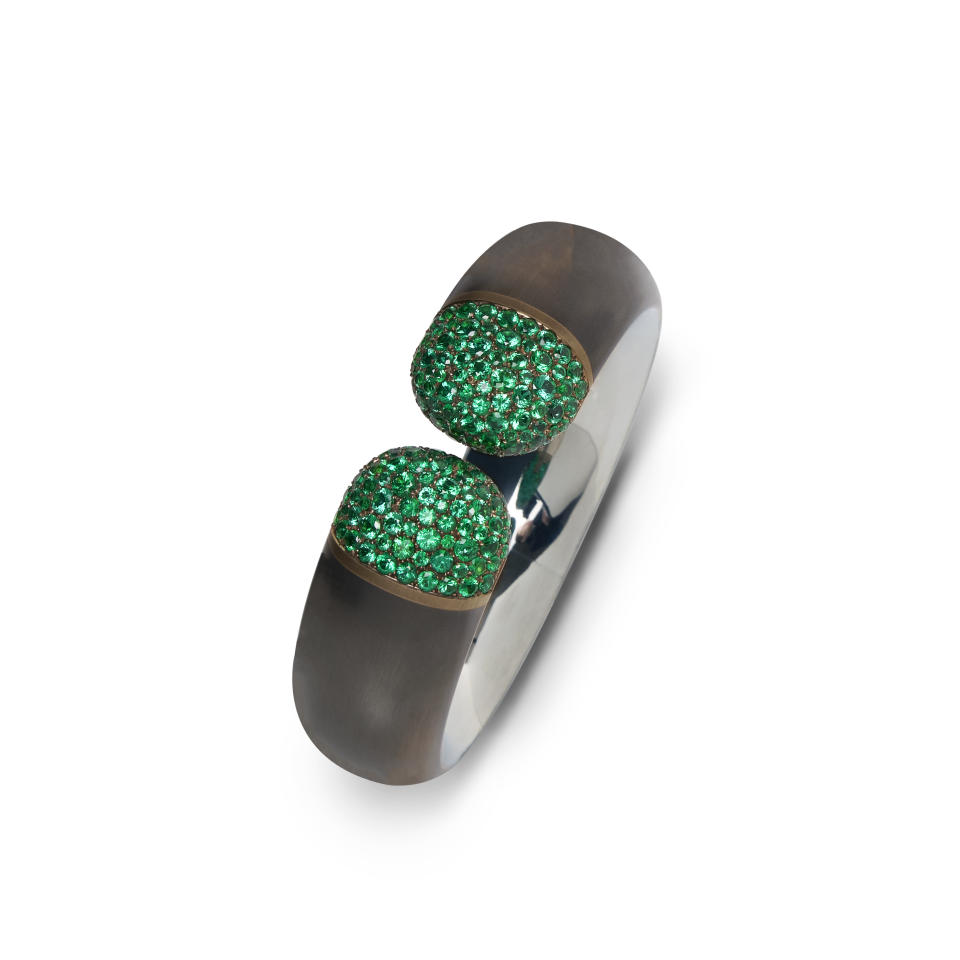Hemmerle’s Next Generation Steps Up

What are the ingredients behind Hemmerle’s hard-to-pin-down allure? The Munich, Germany-based high jeweler makes less than 200 pieces a year and is considered among the world’s leading voices in realms of sophistication and design. Now celebrating its 130th anniversary, the company is on a mission to grow its international client base.
As global travel resumes and high jewelry connoisseurs acquire pieces at a rapid clip, Hermmerle is pushing its global appeal forward while angling toward a new generation of collectors.
More from WWD
Last month, Christian Hemmerle, director and fourth generation owner of the maison, was seated on the mezzanine of the Park Avenue Armory in New York City, where the house exhibits each year during the TEFAF fair.
“I think the world is getting more global and I think it’s very relevant for us. Suddenly we have access to customers and they have access to us — which wouldn’t have necessarily happened 20 years ago. I see us as an international company now,” said Hemmerle, who last year stepped up as the company’s sole director, alongside his wife Yasmin, who primarily oversees designs.
With that, Hemmerle has in the last year opened a permanent salon space in New York City’s Upper East Side, where it hosts clientele twice annually. The firm is looking for a second space in another key American market while also holding twice annual client appointments in Palm Beach, Florida. Hemmerle makes numerous trips to the Middle East each year in locations including Saudi Arabia and the United Arab Emirates to meet with clients on-site. It also now maintains a full-time director for the Asia market and visits Hong Kong regularly for private sales appointments. And this all comes as Hemmerle builds out its first digitized archive, which is expected for completion in 2024.

Founded in 1893, Hemmerle mainly produced medals of honor and court jewelry for Bavarian royals until the late 20th century when the house took an unexpected turn. Stefan and Sylveli Hemmerle — Christian’s parents who still work on the brand in an advisory capacity — transformed what was a traditional jewelry house into a modernist destination.
They introduced new, artistically minded proportions and uncommon materials like wood, bronze, ancient fossils and findings, as well as iron — the latter owing to Germany’s history of Berlin iron jewelry in the 19th century. These combined efforts repositioned Hemmerle as a maison better aligned with fine furniture and art than fellow jewelry brands.
It’s why the Hemmerle family declines to retail with any store other than its own space that is located nearby its Munich workshop. “It doesn’t work for us,” Hemmerle said when asked if he’d ever considered expanding the brand to sell with select retailers.
It’s also why Hemmerle exhibits at fairs like TEFAF that put its jewelry in a wider context when sitting beside items like collectible antiques, handloomed rugs and highly designed light fixtures.
“By being at a fair you meet a much broader collecting audience that has an awareness of design, furniture and jewelry. That’s closer to our sensibility and how we work in a way. That’s our niche now — exhibiting at art fairs — which is definitely not the norm for high jewelry per se but it’s internationalizing our awareness,” Hemmerle said.
Despite a global high jewelry boom, Hemmerle said his house’s sales are limited to its annual output. He has noticed that “people are driven toward something tangible, we can see that impact. But people see us as collectibles and we definitely benefit from that.”
When speaking with Hemmerle, it may seem that there are more nos than yeses in terms of the brand’s ambitions. He maintained that retail is not a big interest. Diffusion products like home decor or perfume that would enable prospective clients to join the brand’s orbit at a lower price point are also not of much interest.
“We have done home, or what we’ve called ‘objets.’ One of our realizations is that whatever we touch takes a lot of time and attention to detail. Whether it’s an iron pot for pencils or our latest earrings — there is only so much you can do,” he said.

Hemmerle has also stopped working on custom commissions for clients and the brand as a whole is not interested — as some other high jewelers do — in expanding its sales via a healthy engagement ring market.
“We did commissions in the past but realized it’s hard enough to keep the creativity going and flowing. To understand what we do, you need to have seen a lot of jewelry. Usually an engagement ring is when people have their first introduction with high jewelry. And so the road to us takes a little bit longer than an engagement ring,” he said.
But by declining all of the above, Hemmerle gains something most jewelers cannot afford to have — a laser focus.
Christian oversees the majority of clienteling, sourcing and manufacturing operations alongside a wider team. The brand employs about 50 people, half of whom work in its atelier crafting jewelry. Twenty-five percent of the workshop’s staff is under the age of 30 — owing to Hemmerle’s German government-affiliated apprenticeship program that aims to preserve the country’s artisan community.
Each Hemmerle design is worked on by a single craftsperson, who can devote up to three years of their time on a single piece. “We never really think in the beginning about how long something takes. People ask us what our secret is and how can everybody recognize a Hemmerle piece? I’d say one of the facets is that everything is produced under one roof,” Hemmerle said.
The house’s stylistic currency has often been centered around sculptural, bulbous forms, like statement earrings. But as those onetime forward-thinking silhouettes enter the mainstream, Hemmerle’s pieces appear to be in the midst of an evolution.

Under Yasmin Hemmerle’s eye, the maison’s new pieces exhibit trim new proportions and techniques — while still carrying a through line of inspiration from nature.
At TEFAF, a 39-carat antique diamond was shown tension set between two slim columns of twisted, blackened iron. A pair of old European cut diamonds were recessed within shallow, brushed iron buttons.
“It’s free thinking,” Hemmerle said when asked to describe the house’s aesthetic. “It’s design-focused, while maintaining excellence in craftsmanship. It strives to be a bit humorous also — I hope we come across that life is too short to only be taken seriously. We always want to have the gem first and then create a perfect home for it,” he said.
Part of that whimsy comes from Hemmerle’s use of uncommon materials. In the last decade, it has become best known for its use of anodized aluminum in earthy shades like grayish lilac, sage green and sap brown. Aluminum allows Hemmerle to create intricate, large-scale designs that have a featherweight — like a pair of cascading earrings shown at TEFAF, set with dozens of little aluminum flowers and pink diamonds in place of pollen.
Hemmerle finds the material to be enigmatic: “Aluminum was once considered the most valuable and rare metal. It’s also extremely difficult and very sensitive — if you make one mistake you have to start from zero. But it’s extremely lightweight. You’re able to create shapes and forms. The colors it produces [through anodization] are natural — other materials tend to go into neon colors.”
By taking a common material and restoring it to its precious past through extraordinary measures, Hemmerle designs continue to command prices that far exceed the intrinsic value of their materials. The brand declines to reveal its pricing model — but secondary market auction results show that pieces are often valued upward of $100,000.

Hemmerle’s high valuations indicate that the brand is not slowing pace anytime soon. With this in mind, Hemmerle is beginning to assemble its first formalized archive that will be completed in 2024. The digitized resources will only be used for internal and academic research purposes, but Hemmerle felt that it was an important investment.
“It will allow us to research and access parts of our history even more vividly and creatively than before,” he said. “It’s a very big focus for us. I think it’s showing respect to our ancestors. We are people who live so much in the current and with my parents not getting younger we wanted to maintain information that has never been written down — so it can live on for the next generations. We will be recording oral histories of the family. Now we have two generations working alongside each other,” he added.
In light of its academic ambitions, Hemmerle has also donated a piece to the Museum of Fine Arts in Boston. The sapphire tassel earrings set with iron and white gold will be part of the museum’s renovated jewelry gallery when it opens in spring 2024.
Hemmerle said this is a sign of the house’s cultural relevancy. “My parents built Hemmerle when it was an even greater challenge to internationalize the brand. It was pre-internet. Incredible benefactors and supporters including museums in this country have really changed our perspective of how our pieces are received as collectible art,” he said.
Best of WWD

